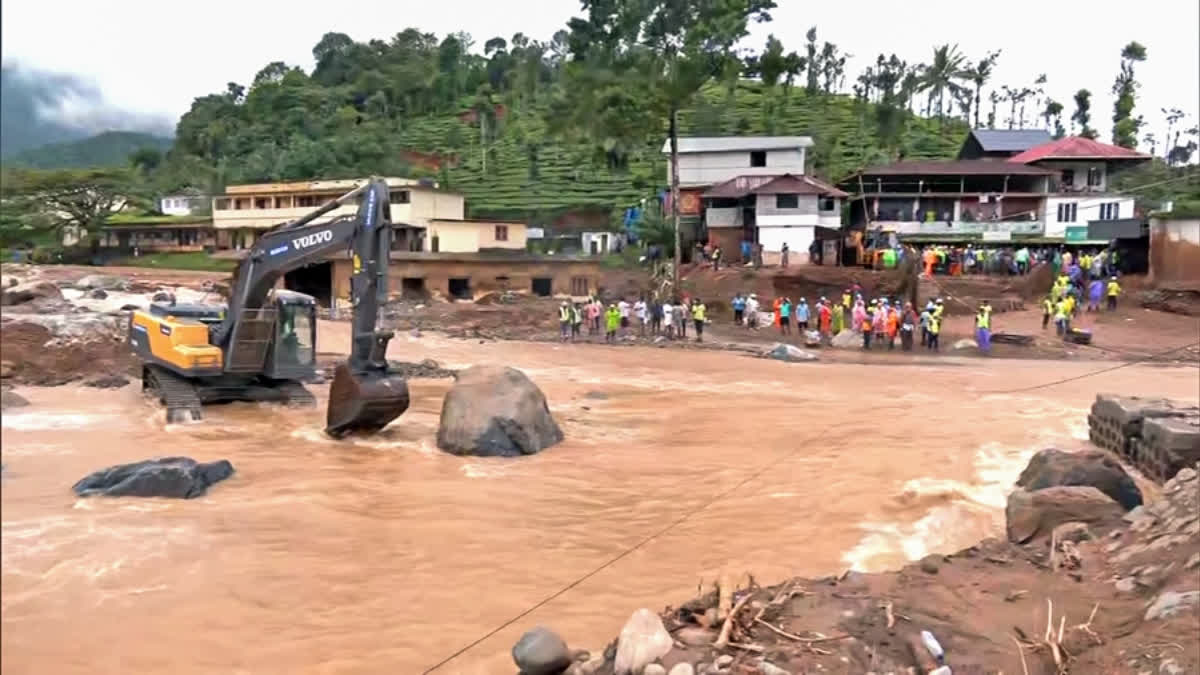New Delhi: The landslide at Wayanad has once again exposed a lack of community and village-level warning systems as far as landslide and erosion was concerned. According to former senior advisor of National Disaster Management Authority (NDMA) Brigadier (Retired) BK Khanna, major exploitation of nature as well as climate change has led to the disaster.
"The incident has once again shown the unabated exploitation at the western ghats. The geographical location of the place (hilly) makes it a very sensitive zone. In addition, a lot of construction activities took place at Wayanad making it more vulnerable to such natural calamity," said Brigadier (Retd) Khanna.
Terming the issue complex, Brigadier (Retd) Khanna added, "A lot of studies have been carried out, I am part of a National Landslide Forum. But lack of funds at the district level remains a sore point. Wayanad is Ooty of Kerala. Hilly area, with sharp slopes. Slopes are supposed to have natural drainage to flush out water into the river."
"Habitation has come up along the drainage area and more so at foothills. They were most affected. The debris, slush and rockfall destroyed the fragile infrastructure. Early warning was given for evacuation, some did, others stayed back and perished. There was no forced evacuation like they do for cyclones. Heavy rains (572 mm in 48 hrs) in the area of Western Ghats, where a lot of exploitation of nature due to deforestation and mining have been aggravated with climate change,” he said.
He said that early warning up to the community level, reduction of vulnerabilities and increasing preparedness are key to success for future disasters.
"Awareness of the community to perceived disasters is the main mitigation measure I would recommend. Provision of funds for mitigation and preparedness should be made available at village level," he said.
However, participating in a discussion over the Wayanad tragedy, Home Minister Amit Shah informed the Parliament on Wednesday that repeated warnings had been conveyed to the Kerala government regarding such landslides.
"The Government of India had issued an early warning to the Kerala government about a possibility of landslides seven days in advance. However, the Kerala government did not heed to the early warning and also did not get alerted even by the arrival of the National Disaster Response Force (NDRF) battalions," Shah said.
The Kerala Government was told that there would be heavy rainfall of more than 20 cm and there are possibilities of landslides potentially causing loss of life of property. "If those (opposition parties) making allegations had read the early warnings, then this situation would not have arisen," said Shah.
Shah said that many state governments have reported zero or near zero casualties in disasters using the Early Warning System. He said that a cyclone alert was sent to the Government of Odisha, seven days in advance, and only one casualty was reported. He further said that an alert was sent to Gujarat, three days in advance, and not a single animal was harmed.
Shah said that since 2014, the Government of India has spent Rs 2,323 crore on Early Warning Systems to ensure the safety and security of the people and alerts are being shared with all stakeholders.
"After Narendra Modi became the Prime Minister in 2014, work has been done to install the world's most modern Early Warning System. India is among the top four-five countries to have the capability to forecast disasters, seven days in advance. Most of the countries have capability to make such forecasts only three days in advance," he said.
